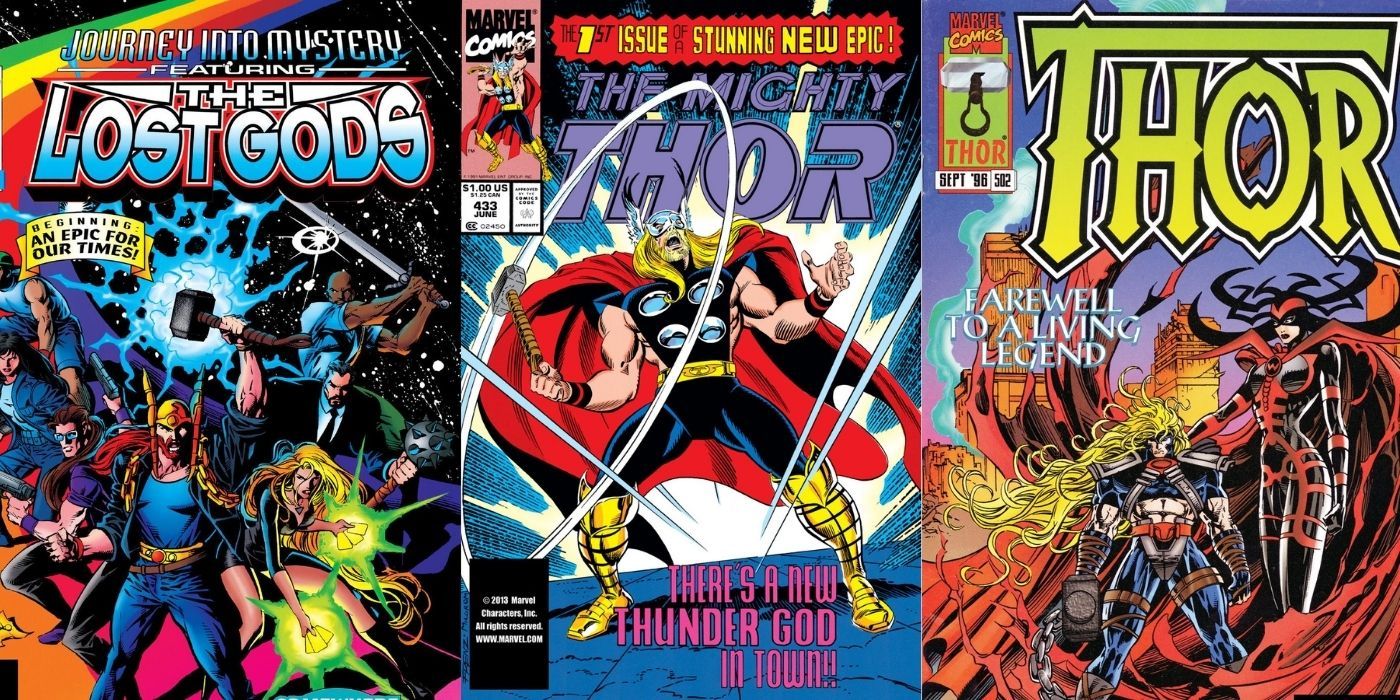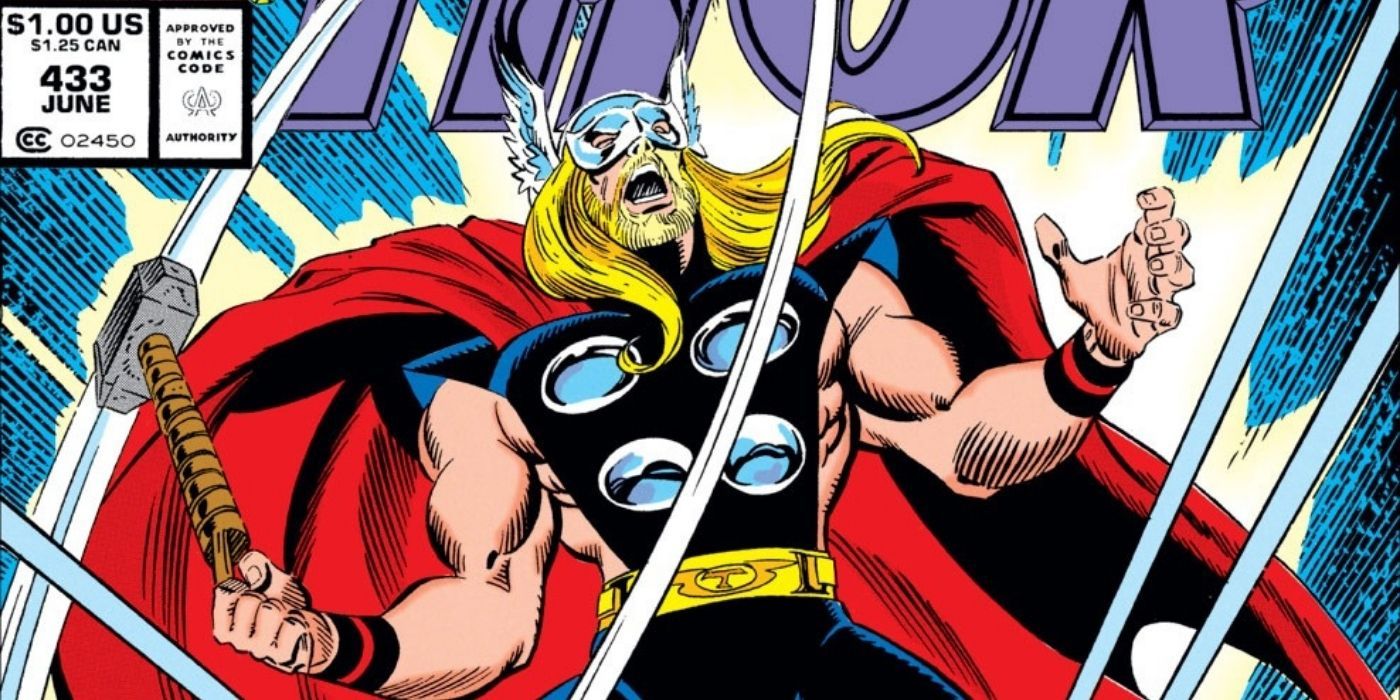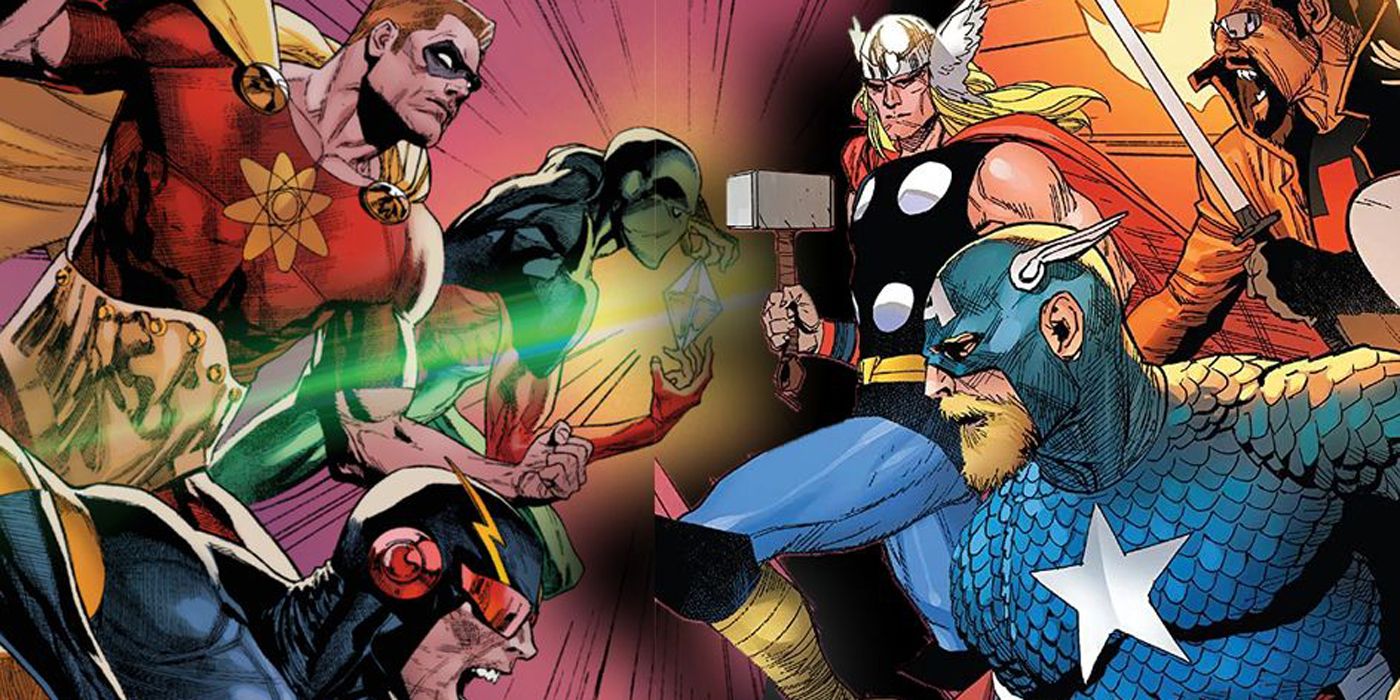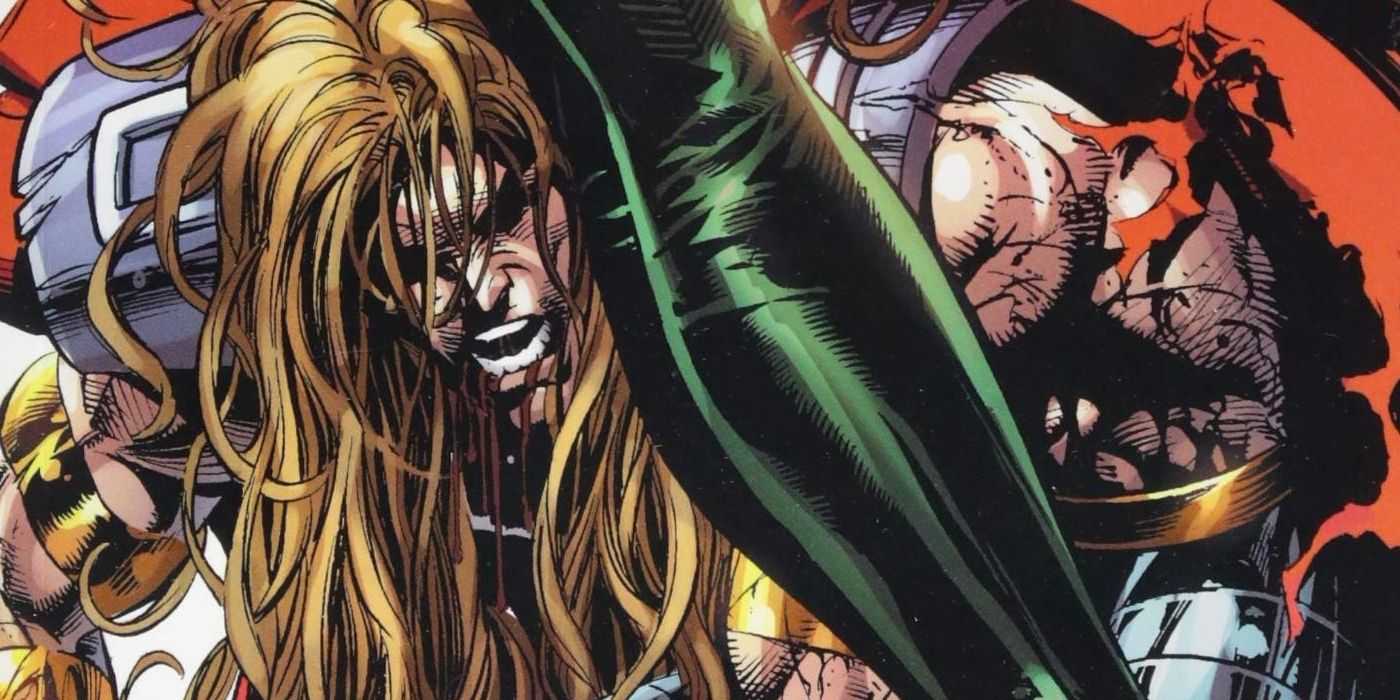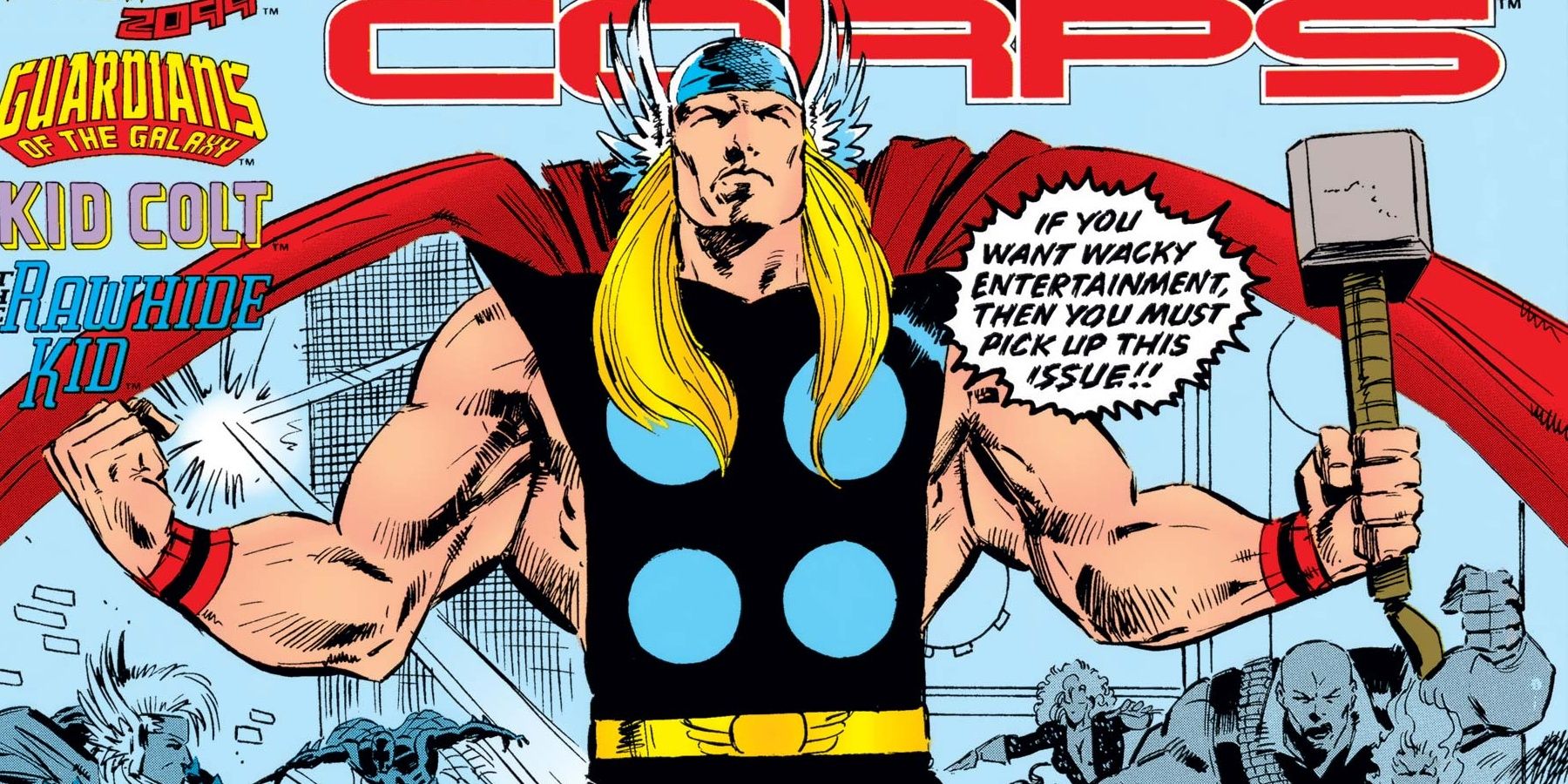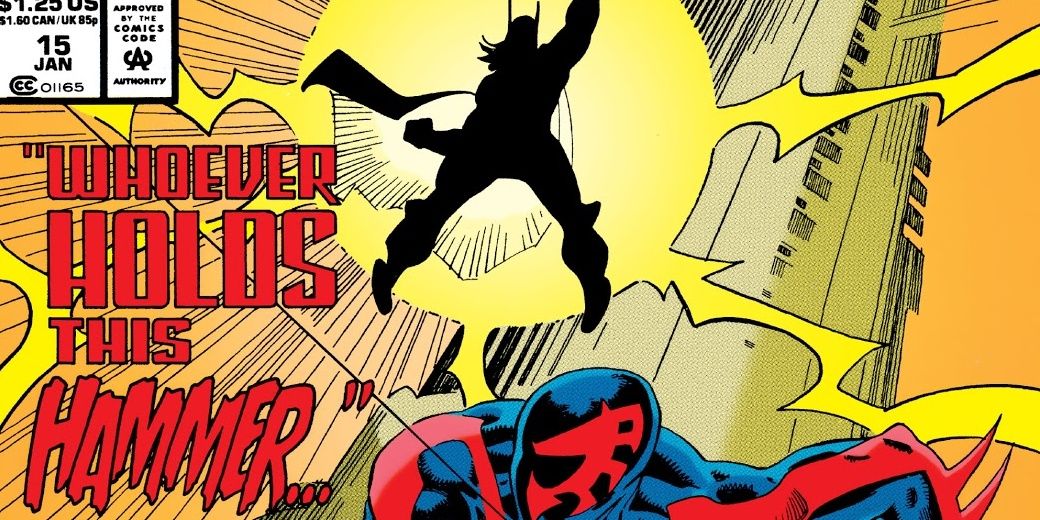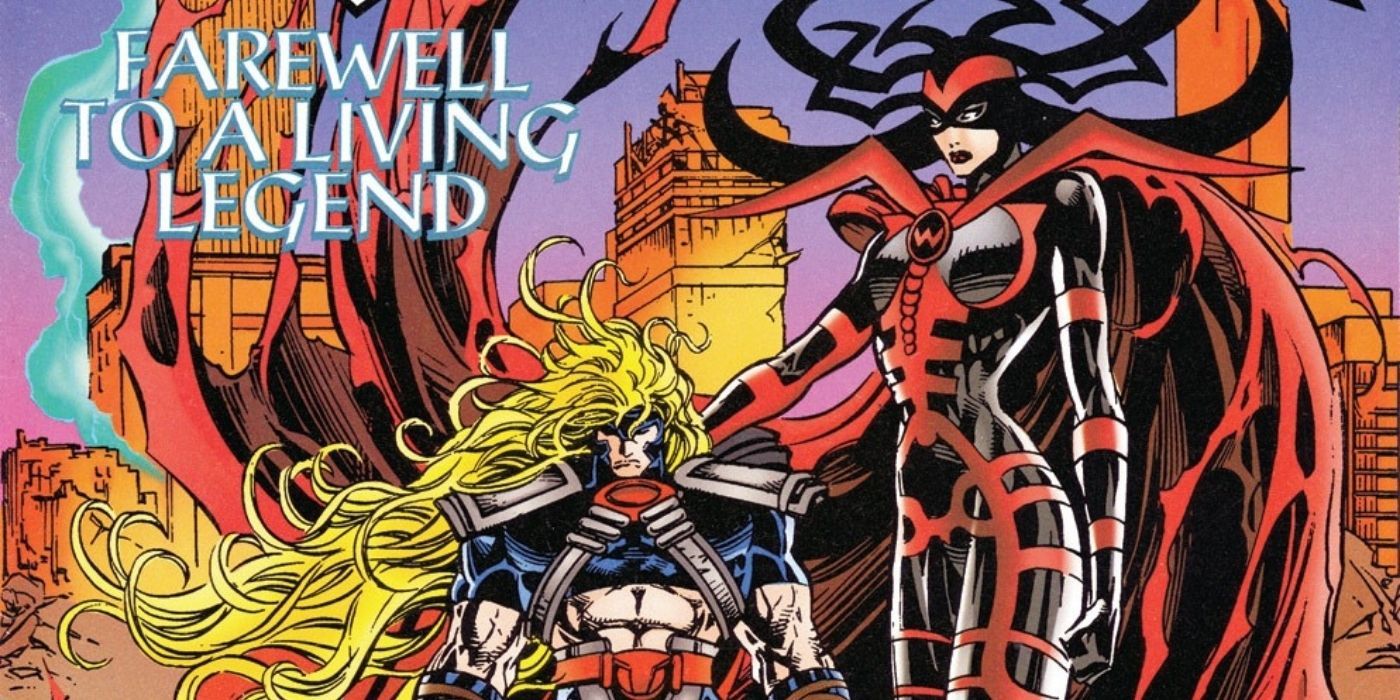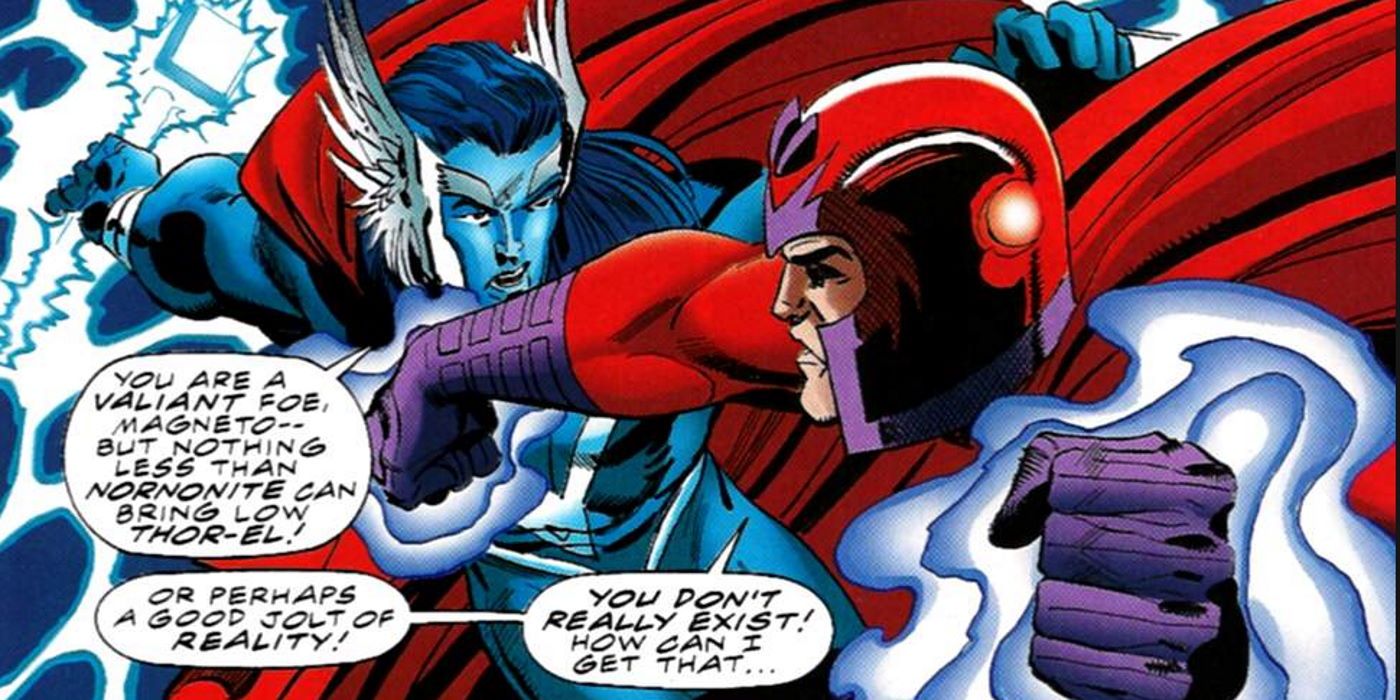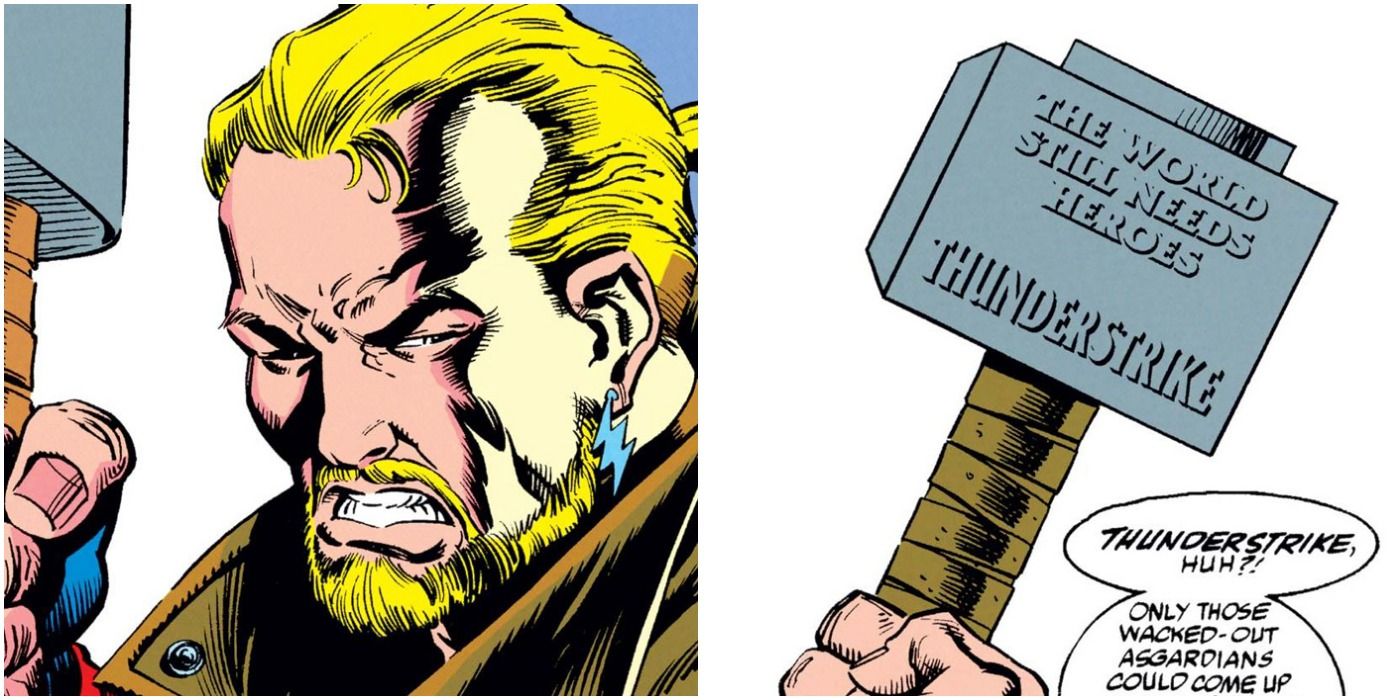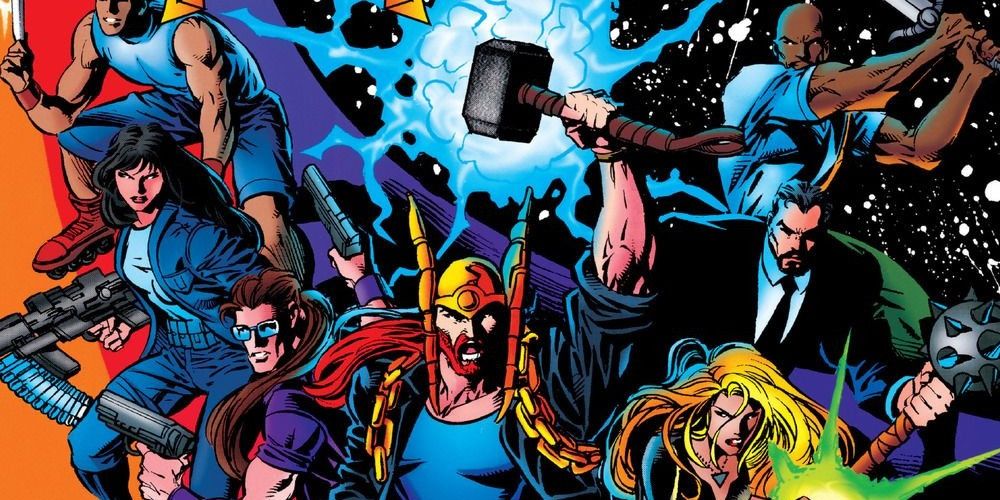The Asgardian god of thunder and his allies went through several trials and tribulations in the 1990s. From facing a Ragnarok-like situation to hopping between dimensions, this decade saw some wildly creative and ambitious storylines, especially with the introduction of characters like Eric Masterson.
Comic book artist Ron Frenz and writer Tom DeFalco offered significant contributions to Thor Volume 1, which accommodated most of the leading Thor stories of that time. The guardian of Asgard also went on to appear in limited series like Heroes Reborn and other series like Spider-Man 2099.
Whosoever Holds The Hammer (Thor Vol 1 #433)
As Thor is banished into the netherworld, Eric Masterson takes up his mantle to preserve Midgard. Even though this human Thor is initially defeated by Ulik, he changes his fighting tactics to emerge victoriously. Masterson figures out that most of his initial moves were directly inspired by Thor Odinson. So, this time he tries fighting like himself instead of aping Thor.
Masterson also sported an iconic look in this comic, complete with a mask that can slide down the helmet. This mask would also find its way into Thor comic issues of the 2010s, with Jane Foster adopting a similar headgear.
Heroes Reborn (Limited Series)
Heroes Reborn reimagines several members of the Avengers in new avatars as Mr. Fantastic's son Franklin Richards teleports them to a 'Counter-Earth'. However, in the case of Thor, he creates his own version in this alternate dimension. Continuing his perpetual enmity with Loki, this new Thor aids the Avengers in their fights against Kang The Conqueror.
This version is more short-tempered and often engages in godly narcissism. He also started having ideological clashes with Captain America. There were moments when the Captain felt they shouldn't kill their enemies. Thor disagreed with this notion, calling the Avengers 'weak'. This changed avatar goes in line with Ultimate Thor who would debut in several Avengers comics of the 2000s.
Worldengine (Thor Vol 1 #491-495)
The apocalyptic event Ragnarok is destined to happen someday or the other. And Thor is aware that his death is destined to play a major role in this cataclysmic occurrence. So, when the World-Tree (a cosmic entity that predicts the time and destiny of Asgard) signals a 'false Ragnarok', Thor is confused about his actions.
Even if this is not the true Ragnarok, it serves as training for the Asgardian to be mentally prepared for the subsequent doom. This comic is a perfect example to showcase Thor's devotion to his homeworld and the fears he has around its imminent destruction.
Thor Corps (Limited Series)
Beta Ray Bill. Eric Masterson. Dargo Ktor. All three 'Thors' put aside their differences and join forces for this ambitious crossover. Thunderstrike also joins the gang as the newly-formed 'Thor Corps' plans to rescue his archenemy Demonstaff's wife on a multi-dimensional journey.
Definitely one of Thor's weirdest comic book arcs, the presence of multiple versions of Thor on a wacky adventure makes Thor Corps an amusing read. If readers get tired of Thor Odinson and his usual heroism, this particular 90s gem would provide a good detour.
The Rise Of The Hammer (Crossover)
An alternate version of Thor from Earth- 928 debuts in multiple issues of Spider-Man 2099 and X-Men 2099. As he and Heimdall arrive on Earth to bring about a golden age, multitudes of civilians in Dowtown become Thor's worshippers and call themselves 'Thorites'. Miguel O'Hara, the Spider-Man of this dimension, questions Thor's true intentions, and this leads to an intense clash between the two.
Spider-Man is clearly overpowered by the god of thunder but he still tries to put up a strong fight. The central conflict aside, what makes The Rise of the Hammer fresh is that no other comic ever saw Thor as an actual deity. Even though he has roots in Norse mythology, Thor Odinson began to be seen as just a superhero in Midgard. This issue showed not just his godly powers, but also his godly supremacy.
Putting On The Bear Shirt (Thor Vol 1 #502)
After Asgard survives a possible Ragnarok, Thor grows disillusioned with his powers. He also ends up losing his godhood and suffers from illness while countering problems on Midgard, such as Tony Stark being controlled by Kang. If this wasn't enough, the sentient entity called Onslaught also attacks New York, testing the limits of Odinson and Red Norvell.
This issue is iconic for several reasons. Firstly, it marked the end of Thor's monumental 502-issue run. Following this publication, Thor Volume 1 got rebranded as Journey Into Mystery Volume 1 for some time. The depiction of Thor in this story is also a standout element, as he sports a new look including a chest harness, shoulder pads, and a half shirt.
Unlimited Access (Limited Series)
Unlimited Access' title refers to Access, a character co-owned by Marvel and DC that can traverse between the two universes. His inter-dimensional journeys also give birth to new hybrid heroes. For instance, one of the original characters in the series was Thor-El, a Kryptonian thunder god that can be seen as an alternate version of Superman and Thor.
Given that both Superman and Thor are celestial beings from other worlds, their combined powers lead to an extremely powerful being. Superspeed and thunder manipulation were Thor-El's preferred powers as he faces off against Magneto. The unique crossover makes Ultimate Access a rare time capsule for Thor fans.
Thunderstrike (Limited Series)
Eric Masterson became a cult hit among fans ever since he became the new Thor of Midgard. Wielding the Asgardian mace called Thunderstrike, the self-titled limited series added more context behind his adventures as he counters a violent crime wave.
Thunderstrike serves as a good segue for those readers who need a break from the colossal Thor Volume 1. With his laid-back attitude and newfound powers, Masterson makes for the perfect underdog hero. Initially, he's an ordinary architect, but when he gets saved by Thor (and vice versa), his life changes forever.
A Gathering Of Heroes (Journey Into Mystery Vol 1 #503)
Breaking away from Thor Volume 1, Journey Into Mystery's reboot kicks off with Red Norvell being convinced that he's one of the 'Lost Gods'. As mysterious men in black chase him down to his death, the real Lost Gods seem to arrive on the scene. This collective is nothing but a group of Asgardians like Odin, Balder, Sif, and Loki in their human forms.
The plot thickens with the future issues in the series but it is still an important read for Norvell's death and The Lost Gods' debut. Thor Odinson does not make an appearance but the comic stands on its own as it details the aftermath of his melancholic departure from New York (in the last issue of Volume 1).

